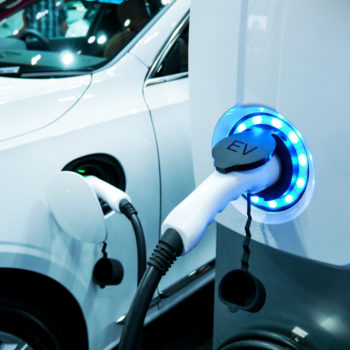Many Strata communities are taking proactive steps to accommodate rise of electric vehicles (EVs) in Australia. However, amidst the enthusiasm for EV adoption, it is crucial for Strata to fully comprehend the implications on their building’s electricity bills.
As more residents within apartment complexes embrace EVs, the demand for reliable and accessible charging infrastructure is on the rise. While providing EV charging facilities may enhance the appeal of a property, the financial aspect demands careful consideration.

Electricity Bill Components: A Key Factor
Strata communities need to be well-versed in the components of an electricity bill, particularly understanding the role of network charges and peak demand capacity charges.
Network charges, which cover the cost of transporting electricity from its generation point to consumption points, typically form a significant portion of the bill.
Unique to Western Australia, Capacity charges are incurred during periods of peak electricity usage and are essential for ensuring generators are available when demand on the network surges.
Although often bundled into a single tariff on electricity bills, Network and Capacity charges have a substantial impact on the overall expenses. Even if these charges are not directly visible on the electricity bill, they are factored into the bundled rate that the electricity retailer charges you.
The Impact of EV Charger Usage
When it comes to EV charger usage, it’s essential to consider the impact on each of these charges, as they may increase the cost of the building’s electricity above and beyond what can be recovered from residents who are typically charged at the Synergy A1 rate.
Network Charge Impacts
It’s crucial to understand a building’s electricity supply contract and the corresponding network tariff, even if it’s a bundled electricity contract. Network tariffs can be usage-based or demand-based, with the latter further classified as metered or contracted.
EV chargers can significantly increase a building’s maximum power demand if not managed correctly. This can lead to increased network tariff costs if the building is on a demand-based network tariff.
Evaluating, understanding and managing the potential impact of EV charger usage on the building’s maximum power demand is vital to a sustainable EV charging solution.
Capacity Charge Impacts
Capacity charges are based on a building’s electricity usage when the network is at its peak, which occurs during capacity events. These capacity events occur during the top three 30 min intervals on the four days with the highest demand on Western Power’s network during the hot season (December to March) These peak periods usually fall between 4 pm and 7 pm on hot summer days when air conditioners and other cooling systems are running at full capacity.
EV chargers have the potential to significantly increase a building’s electrical load during capacity events. This is especially true for residential buildings, where users are likely to plug in their EVs when they return home from work, which happens to be during the typical capacity event timing.
When multiple EVs are charging simultaneously, the total electrical load can quickly add up, resulting in a costly increase in capacity charges.
Strata should take into account the potential impact of EV charging on capacity charges when planning for EV charging infrastructure.
Strategising EV Charging Load Control
To optimise EV charging infrastructure and minimise electricity expenses, Strata communities should focus on implementing effective load management systems. By strategically controlling chargers or staggering charging times, peak demand can be reduced during capacity events, mitigating potential cost increases.
Recommended Charger Type and Billing Solutions
Choosing the right charger type, such as Level 2 chargers with appropriate power limits, is essential to ensure equitable access to total energy capacity. Additionally, implementing billing solutions like submetering or usage-based data tracking enables accurate cost recovery from EV charger usage.
Clear Rules and Guidelines
Establishing clear rules for the installation and use of EV chargers is fundamental to ensuring fair and efficient usage among tenants. By limiting charger capacity, requiring connection to a centralised load control device, and implementing billing mechanisms, Strata communities can avoid disputes and efficiently control expenses.
The Path to Sustainable and Informed EV Charging
As EV adoption continues to grow, it is imperative for Strata communities to embrace the shift and proactively plan for efficient charging infrastructure. By incorporating load management strategies and adopting billing solutions, Strata complexes can provide a seamless and equitable EV charging experience while optimising electricity expenses.
If your Strata would like to understand the impact of EV charging on your apartment building, please get in touch with us.
